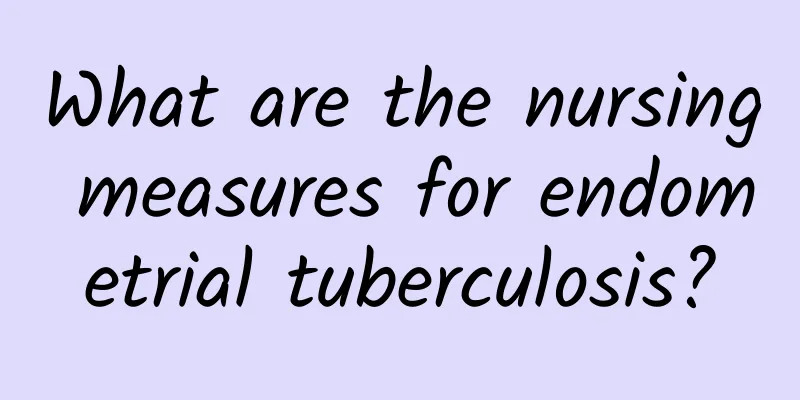What are the symptoms of benign uterine fibroids and what types of surgeries are there for uterine fibroids?
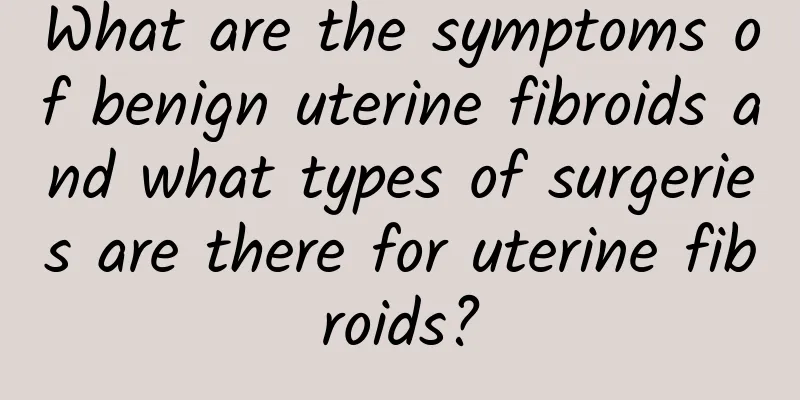
|
With the continuous development of society, many people suffer from uterine fibroids. In fact, this is also a more common female disease. In fact, the onset of the disease may also affect the patient's fertility problems. So, we should pay attention to what symptoms will be caused by benign uterine fibroids? The following are specific statements: What are the symptoms of benign uterine fibroids? 1. Menstrual disorders are usually caused by ovarian or even bilateral uterine fibroids. Because they do not destroy all normal ovarian tissue, they mostly do not cause menstrual disorders. Some uterine bleeding is not endocrine, or it is caused by ovarian tumors changing the pelvic vascular distribution, causing endometrial congestion; or it is caused by malignant ovarian tumors directly metastasizing to the endometrium. Menstrual disorders caused by endocrine tumors are usually combined with other secretory effects. 2. Lower abdominal discomfort is the initial symptom of the patient before touching the lower abdominal mass. Due to the weight of the tumor itself and the influence of intestinal peristalsis and posture changes, the tumor moves in the pelvic cavity, involving its pedicle and pelvic funnel ligament, causing the patient to feel swelling and sagging in the lower abdomen or fossa. 3. Abdominal circumference thickening and abdominal tumors are the most common phenomena in uterine fibroids. Before patients notice the enlargement of their abdomen or feel abdominal swelling in the morning, they realize that their clothes or belts are tight. Therefore, they find that there is swelling and bloating discomfort in the abdomen according to the abdomen. 4. Abdominal pain. If the tumor has no complications, the pain is rare. Therefore, patients with ovarian tumors feel abdominal pain, especially when it occurs suddenly, and multiple series of tumor pedicles are twisted, occasionally caused by tumor rupture, bleeding or infection. In addition, malignant cysts mainly cause abdominal pain and leg pain, and the pain often causes patients to go to the emergency room. Several conventional surgeries for the treatment of uterine fibroids 1. Abdominal hysterectomy: Suitable for patients who have no fertility requirements, whose uterus is ≥12 weeks of gestational age; who have frequent menstruation accompanied by hemorrhagic anemia; who have rapidly growing fibroids; who have symptoms of bladder or rectal compression; who have failed conservative treatment or whose tumor is large or severe after myomectomy. 2. Vaginal hysterectomy: Suitable for patients with no adhesion, inflammation, or mass attachments in the pelvis; no abdominal scars or individual abdominal obesity; the size of the uterus and fibroids does not exceed 3 months; uterine prolapse can also be reconstructed through vaginal resection of the pelvic floor; no history of previous pelvic surgery, no need for exploration or removal of attachments; medical complications such as diabetes, hypertension, coronary heart disease, and obesity. 3. Cervical myomectomy: If the cervical and vaginal myoma is too large and surgery is difficult, surgery should be performed as soon as possible (through the vagina); if the myoma is large and produces compression symptoms, compressing the rectum, ureter or bladder; if the myoma grows rapidly and malignant changes are suspected; young patients should retain their fertility, otherwise a total hysterectomy should be performed. 4. Broad ligament myoma resection: suitable for patients with larger tumors or compression symptoms; broad ligament myomas and solid ovarian tumors are difficult to distinguish; myomas grow rapidly, especially suspected malignant variants. 5. Submucosal fibroids often lead to menorrhagia, and prolonged menstruation requires surgical treatment. Clamping method, loop method, capsule cutting method, electric cutting method, torsion resection method, etc. Surgery can also be performed under hysteroscopy until abdominal, vaginal or laparoscopic hysterectomy. 6. Laparoscopic or laparoscopically assisted uterine fibroid surgery: Myomectomy is mainly suitable for symptomatic fibroids, single or multiple subserosal fibroids, and tumors with a maximum diameter of ≤10cm. Pedunculated fibroids are the most suitable; single or multiple intramural fibroids, with a minimum tumor diameter of ≥4cm and a maximum of ≤10cm; multiple fibroids ≤10; the possibility of malignant changes in fibroids should be excluded before surgery. Laparoscopically assisted myomectomy can appropriately relax surgical indications. Laparoscopic or laparoscopically assisted hysterectomy is mainly suitable for patients with large fibroids, obvious symptoms, ineffective drug treatment, and no need to preserve reproductive function. However, it is not suitable for patients with large tumors, severe pelvic adhesions, suspected malignant tumors in the reproductive tract, and general laparoscopic surgery contraindications. 7. Hysteroscopic surgery: Hysteroscopic surgery should be considered first for symptomatic submucosal fibroids and intramural fibroids protruding from the uterine cavity. It is mainly suitable for menorrhagia, abnormal uterine bleeding, submucosal fibroids or intramural fibroids protruding from the uterine cavity. The diameter is 5 cm. 8. Other minimally invasive surgeries for uterine fibroids, including microwave, cryotherapy, and bipolar vaporization knife, are only suitable for smaller submucosal fibroids; radiofrequency therapy and focused ultrasound also have their unique scope of application, and not all fibroids can be used. Uterine artery embolization also has its scope of application. In short, various treatments have their own advantages and disadvantages and indications. Each method cannot completely replace another method, let alone traditional surgical treatment. It should be personalized. Related effects, side effects, and complications need further observation and cannot be determined prematurely or absolutely. (Do you want to receive authoritative parenting knowledge from pediatric experts from tertiary hospitals every day? Long press the picture above to scan the code) |
Recommend
The benefits of exercise for vaginal candidiasis
Women with candidal vaginitis can effectively rel...
Will second-degree cervical erosion in women also turn into cancer? What misunderstandings should patients with cervical erosion pay attention to in treatment?
In daily life, it is very common for female frien...
Symptomatic weight loss is more effective! TCM looks at 4 types of obesity
Traditional Chinese medicine divides obesity into...
How to treat thin endometrium and premature ovarian failure?
Treatment of thin endometrium and premature ovari...
Briefly describe the causes of candidal vaginitis
Candidal vaginitis is a disease caused by fungal ...
Five-star confinement for laying hens! Can play and sharpen claws Humane breeding
According to statistics, there are currently abou...
Does adenomyosis affect pregnancy?
Can I get pregnant with adenomyosis? Adenomyosis,...
Experts analyze the causes of irregular menstruation
Irregular menstruation is one of the common disea...
What fruits are suitable for uterine fibroids? The number one fruit for fighting uterine fibroids
What fruits are suitable for uterine fibroids? Ut...
What are the signs before women's menopause? You need to know these 6 signs
What are the signs before women enter menopause? ...
What are the symptoms of uterine fibroids?
Most patients with uterine fibroids will experien...
When is it appropriate to check for pelvic effusion?
Some women think they may have pelvic effusion ba...
Will an 8mm uterine fibroid disappear?
If a woman of childbearing age has an 8mm uterine...
What medicine can cure amenorrhea quickly?
What medicine can cure amenorrhea quickly? Amenor...
What anti-inflammatory drugs to take after miscarriage
What anti-inflammatory drugs should I take after ...


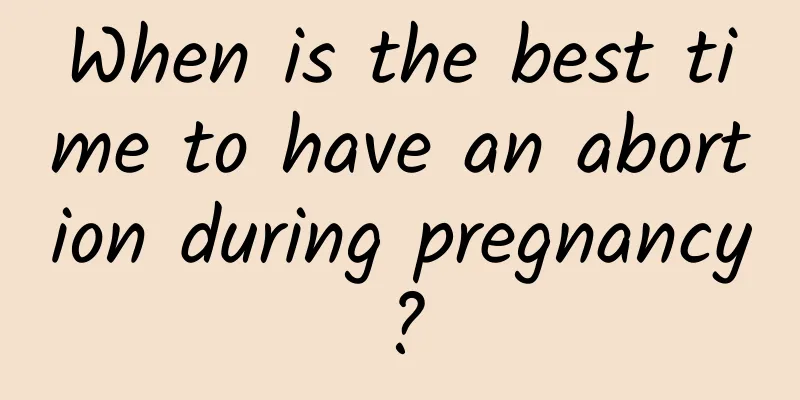
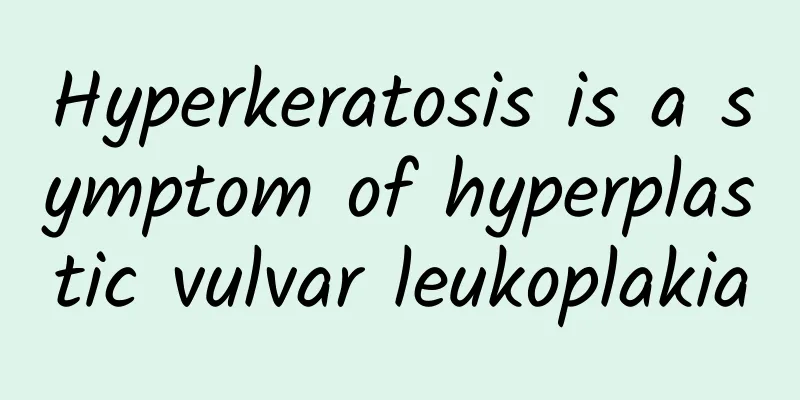

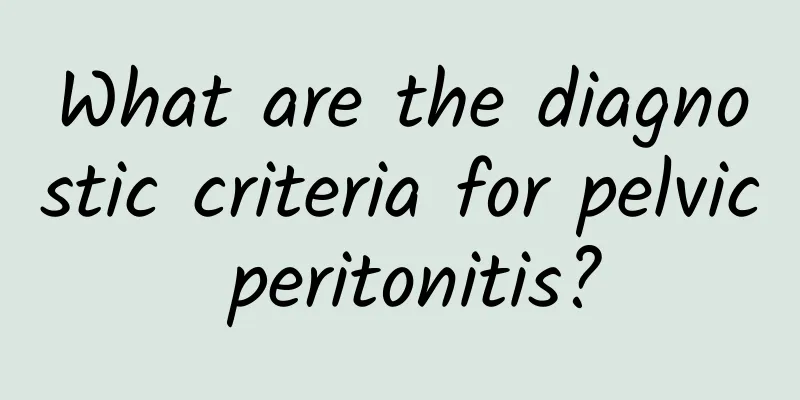

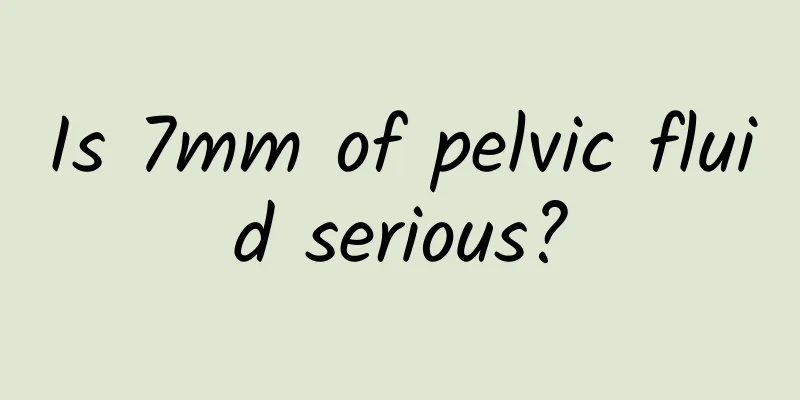
![[Video version] To fight colds, you must first take good care of your intestines! It is better to eat fruits and vegetables than to eat them randomly](/upload/images/67dd1f48a4f8c.webp)
